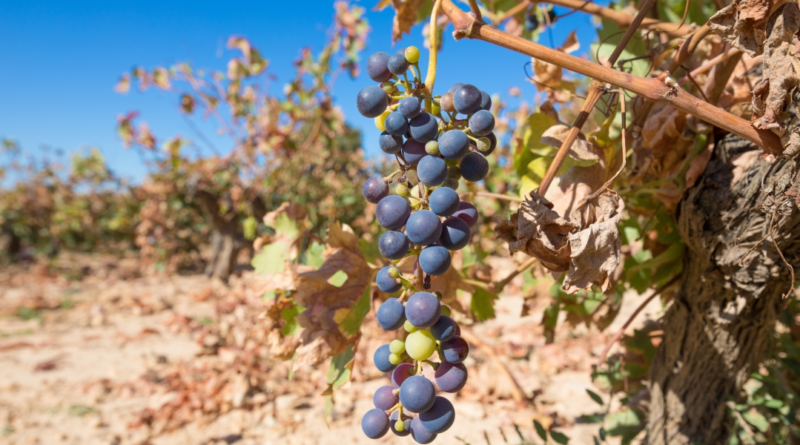How this board is bringing the international wine community together to fight climate change
Wildfires, hail, disease: As climate change continues to batter many agricultural sectors, the wine industry is coming together to find solutions.
International Wineries for Climate Action (IWCA) was founded jointly in 2019 by Familia Torres, a wine company based in Spain, and Jackson Family Wines, headquartered in California. The mission of the IWCA is to reduce carbon emissions both in the vineyard and winery. As membership continues to grow and the organization evolves, the executive board recently hired its first executive director, Charlotte Hey. With 40 members across 10 countries, Hey must navigate the various communication and environmental needs of members while unifying this international community to meet the IWCA’s goals.
A focus on action
The seeds for IWCA were sown in 2011. Miguel Torres, a fourth-generation winemaker and president of Familia Torres Spanish Wine Federation, proposed—in partnership with the Codorniu and Vega Sicilia wineries—a similar initiative, named Wineries for Climate Protection. But several factors, including an economic crisis in the middle of the decade, halted the project. A few years later, a meeting at a conference in Brussels with Katie Jackson, second generation and senior vice president of corporate social responsibility of Jackson Family Wines, reignited the resolve: The IWCA was born, this time with an international lens.
“We are focused on climate action,” emphasizes Josep Maria Ribas, sustainability director of Familia Torres. IWCA takes a very measured approach to success. Its sole focus is on reducing carbon emissions and standardizing the way members calculate their greenhouse gas emissions. By identifying specific emission “hotspots,” from the vineyard all the way down to getting the final product in consumers’ hands, the IWCA is creating a road map for better practices.
Membership is tiered to welcome wineries of all sizes and in various stages of their sustainable conversion journey. Purchasing offsets is not allowed, and transparency in wineries’ practices is paramount. The ultimate goal for members is to reach net-zero emissions by 2050, with an intermediary goal of cutting 50% of emissions by 2030. In 2021, the IWCA joined the United Nations Race to Zero campaign as the first member in the wine and agriculture sector. Since IWCA’s inception with 10 founding companies, membership has grown to 40 members, with Opus One (Napa Valley), Ste. Michelle Wine Estates (Pacific Northwest), and Tikveš Winery (Macedonia) joining as of April 2023.
The evolution of the board
Once rules for membership were established, IWCA engaged the services of the nonprofit Meridian Institute to serve as secretariat and facilitator, which Meridian continues to do today. Bylaws were created as was the first board, which counted two members each from Familia Torres (Miguel Torres and Josep Maria Ribas) and Jackson Family Wines (Katie Jackson and Julien Gervreau). As more wineries came on board, “we opened up this board of directors [by election] to welcome other winery members [in order to] make it more impartial and to increase the level of participation within the strategy of the group,” says Ribas. The executive board now consists of seven members from Spain, Portugal, New Zealand, and the United States.
In November 2022, IWCA took another step forward by hiring Charlotte Hey as executive director. Hey started in the world of wine journalism first as the publisher of Harpers Wine & Spirit in the U.K., then as a founding member of The Drinks Business in 2002. Ten years ago she sold her shares, moved to Spain, and started a communications company. IWCA approached her in mid-2022 to help consult on raising the organization’s profile, but discussions progressed, and in November 2022 she joined as executive director.
The executive team—including Hey, Ribas, and Gervreau—meets biweekly, and the executive board meets quarterly, at which time they review new member applications, budgets, and current initiatives. At these meetings, new strategies are also discussed at length.
For the next 18 months, Hey plans to focus on three things: communication and raising the profile of IWCA; increasing membership; and creating more cohesion and sense of purpose among existing members so they can spread the word—and work—in their markets.
Managing international needs
One of the biggest balancing acts of the IWCA is meeting the macro vision while working on a micro level. Because success metrics rely on percentages, rather than blanketed numbers, they are inherently accommodating to members’ respective locations and situations. “Although [the process is] rigorous and transparent, it is flexible as well, because the key is that we’re all working toward the same goal,” says Hey. “We’re not competing; we have to all work together.”
New tools continue to address wineries’ local needs while bringing the IWCA community closer together. Calculating the initial emissions is the biggest challenge when getting started, according to Hey. To wit, IWCA released specific calculators for the U.S. in 2021, and for Australia and New Zealand in 2022. Hey also began rolling out new educational tools, such as knowledge exchange seminars on topics like biomass boilers and regenerative farming, with more being added to the calendar.
English is the official language of the IWCA, but Spanish is also frequently spoken. Both Ribas and Hey admit this can be a barrier for new wineries looking to get involved, and Hey is aiming to translate materials into seven more languages in the coming months. Even small changes, such as conducting two new member meetings instead of just one—to accommodate broad time differences—take another step toward improving internal communications.
Looking to the future
Two significant new initiatives set by the board for the coming year target all three of Hey’s primary goals. The first is a new category of membership, called IWCA Friend. Targeted at professionals such as sommeliers, and companies including retailers and importers, it brings other wine industry sectors into the IWCA fold.
The other is the Country Ambassador Program, in which IWCA winery members help promote the work of the nonprofit to the press and others in the community, as well as recruit new potential winery members. For 2023, target markets include Chile, Portugal, France, and the Pacific Northwest of the U.S., just to name a few.
Hey is excited about the future but cognizant of what lies ahead. “One of the challenges is going to be establishing the IWCA as the benchmark for sustainable greenhouse gas emissions,” she says. “I believe we can do it because I know from scrutinizing the standards that it’s in place. And I think by working hand in hand with Race to Zero, that it’s something that we can achieve.”
“At the end of the day, I think the members of the IWCA, we are not there because we want to increase our sales,” says Torres. “We are there because we think it has to be done, and something we can explain to the future [generations], to our children, that we try, we did our best in order to help reduce emissions.”



